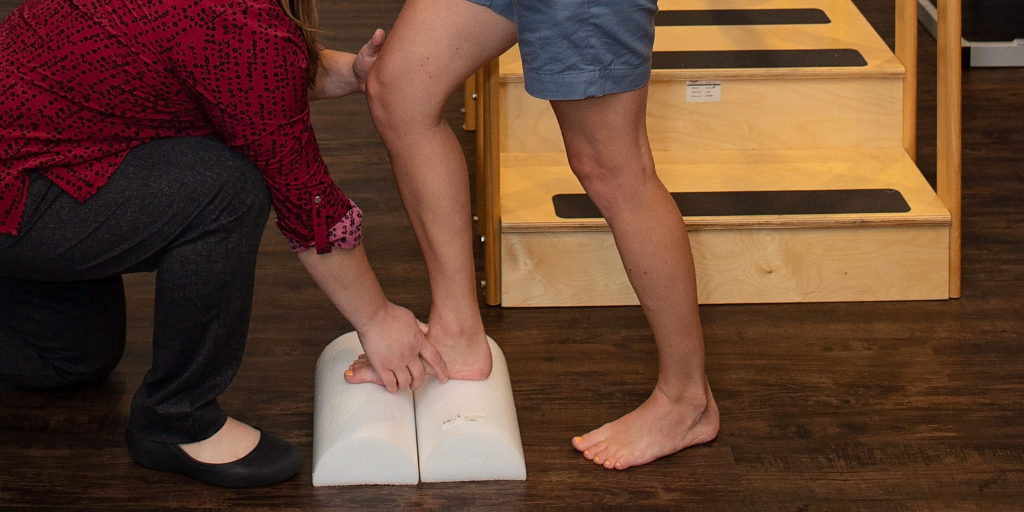Written by: Amy Tubb, Director of Marketing & PR and Dr. Janine Nesin, CEO & Co-Owner , PT, DPT, OCS
So I went into work the other week and was making chit chat with one of our PTs…and here’s how our conversation went:
Me: Hey! How are you today?
PT: I’m doing good. How about you?
Me: I’m good, although I need to have you or someone look at my foot.
PT: Oh? What’s going on?
Me: Well I’m having some heel pain first thing in the morning when I get up and sometimes at night when I’m chilling on the couch, I’ll have shooting pain in my arch and heel. Does that mean I have the Plantar? (meaning Plantar Fasciitis)
The look on her face said it all.

So let’s talk about foot pain for a minute. Does this sound familiar? Sharp, severe heel pain…usually first thing in the morning when you step onto the floor from bed? Sometimes after you’ve been standing for a while or after a very active day? Of course, I’m a “symptom” Googler, and therefore I had a suspicion that I knew what it was. My family was like, “you should go to the doctor!” And I was like, “why would I go to the doctor when I work with physical therapists?”
I wanted additional insight into this ailment, so I went straight to the top, to someone I knew loved feet, and asked our CEO, Dr. Janine Nesin, PT, DPT, OCS, some questions about plantar fasciitis:
Amy: Janine, tell me exactly what plantar fasciitis is and what it affects.
Janine: It is basically inflammation of the thick band of tissue that runs across the bottom of each foot and connects the heel bone to the toes (plantar fascia). Plantar fasciitis is characterized by pain or stiffness in the heel. Let’s be specific though…we’re talking the bottom of the heel, in front of the heel bone. A lot of people think “heel pain” and think of the back of the heel. This sharp pain is a cardinal sign of plantar fasciitis.
Amy: Why does it occur?
Janine: The plantar fascia is the main supporting structure of the arch of the foot. It is essentially a shock absorber and acts as a recoil so that the weight of your body, etc., is absorbed within the foot itself and not up through your body. Tension and stress on the fascia can cause micro tears and repeated stress and tearing of the facia can irritate or cause it to become inflamed.
Amy: Is there something specific that causes it? Or a better question might be, are there risk factors?
Janine: Well we’re talking about the supporting structure of the arch of the foot, so poor footwear, activity (running or walking), and working on hard surfaces (think nurses, teachers, and people that work in factories and/or warehouses), can all contribute to the onset of plantar fasciitis. Age range you typically see this in most is 30-55 year olds. And while this can happen in any type of foot, we tend to see this condition in the extremes, when it comes to actual foot structure – meaning people with either a really high arch or a flat arch.
Amy: Okay, let me be frank…what can I do to get rid of it? LOL
Janine: Let me start by saying that because we’re dealing with a ligament, rather than a muscle, the healing time is longer. So the steps you take, you’ll need to do consistently for a longer period of time in order for the healing to take place. There is no “quick fix” when it comes to plantar fasciitis.
So what works? Anti-inflammatories will help, if you can take them. Physical therapy of course. Stretching of the calf and the foot itself. Why the calf? If the calf is tight, then the plantar fascia will be tight as well. So many things in your body are connected! Supportive footwear – no heels or flats (such as ballet flats).
Amy: Um…no heels or flats? What else is there???
I decided to move on…
Amy: So what are some specific ways to stretch or “exercise” the affected area?
Janine: Use a superball (small rubber bouncy ball), which is better than a tennis ball (because it’s too big) and roll your arch along it on the floor to massage the affected area. Holding a rope or cloth robe tie under the ball of your foot, and pulling toward you to get a good stretch. Rolling your foot along a frozen water bottle, which combines ice (for inflammation) and massaging part as well!
Amy: What other tips can you give us?
Janine: People tend to have the most severe pain when they get out of bed in the morning – that first step on the hard floor; or after sitting for a long period of time. So doing stretches before you get up is a great idea. Having a pair of supportive shoes or slippers next to your bed so that after you’ve stretched, your feet go into something with good arch support instead of directly onto the hard floor is another tip. Also, another trick for people is that when you’re sleeping, put a pillow under the top sheet, against the footboard (really works best if you have a footboard on your bed), to lift the covers up off your toes in the night. This way your foot won’t be pushed down into a pointed position, and will allow for a more neural foot position for healing while you sleep.
Also, don’t ignore pain…you risk it turning into chronic pain that can end up hindering your day-to-day activities. This can lead to you being more likely to change how you walk to avoid the pain that comes from the plantar fasciitis – and that can lead to additional foot, knee, hip or back problems!
Amy: Thanks Janine! So what I’m hearing is that this isn’t something I’m going to get “fixed” in like a week then?!?
Janine: You’re going to have to work at it over time because as I mentioned before, this is an ailment that takes a long time to heal. Have patience and work on it diligently! Your foot doesn’t get rest, not like a shoulder or an elbow; it supports all your body weight, all the time!
Needless to say, patience isn’t usually my virtue, but after a couple of PT sessions, and doing the stretches, etc., at home, I’m already feeling a big difference in my plantar fasciitis pain!
If you’ve been told you have Plantar Fasciitis or you suspect that you might, know that treatment is as easy as calling one of Nesin Therapy or NesinFIT clinics. Visit our website for more information at www.nesintherapy.com or www.nesinfit.com.

